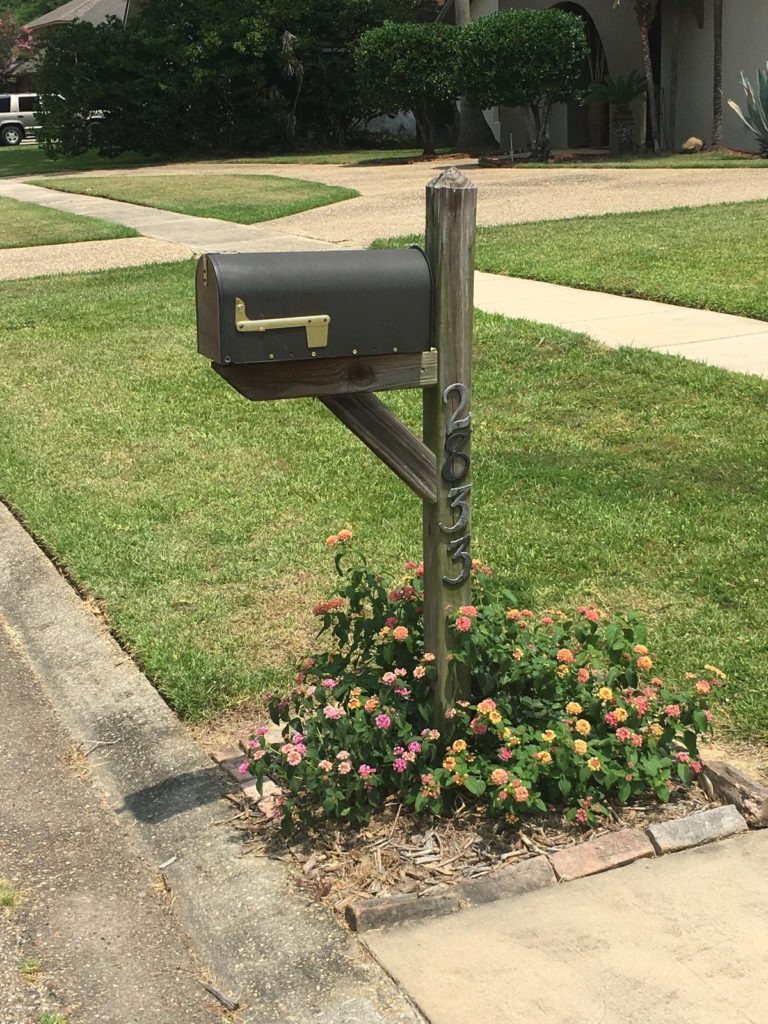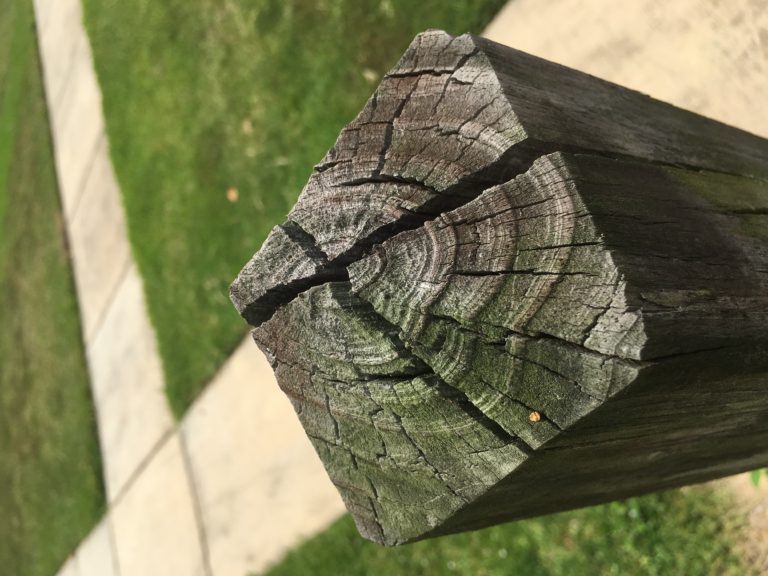End Cracking of Round Posts
My Mailbox
My mailbox has been hit by passing cars several times in the past few years. The last one was a good one so it was time to get a new mailbox. The new post is pressure treated for ground contact with ACQ (alkaline copper quaternary) and was set in concrete to be sturdier. I was concerned about having a flat exposed surface so I cut it so that water cannot sit on the top surface of the post. I did not field treat the post because there was complete penetration of the preservative so I felt that field treatment was not necessary. I did not determine the moisture content of the post at the time of instillation, but it was dry to the touch, and I proceeded with the assumption that the post had been kiln dried to approximately 19% moisture content. After about one year of service, the exposed end of the post is severely cracked.
Wood Shrinkage
An annual application of a water repellent would have helped but this situation was probably inevitable for two reasons. The first reason is due to anisotropic shrinkage. This is a fancy way of saying wood shrinks, and swells, at different amounts depending on the grain direction. For example, in a flat sawn board, the thickness is the radial direction and the width is the tangential direction. The opposite is true in a quarter sawn board. The tangential shrinkage is typically twice that of the radial shrinkage. This is the reason you often see cracks on the end of a log that resemble spokes in a bicycle wheel. As the wood is drying, internal stresses develop and a crack develops when the stress is greater than the inherent strength of the wood. My mailbox post has been exposed to several cycles of hot and cold, wet and dry which leads to swelling and shrinkage. This repeated cycle inevitably will cause checking, particularly in round stock (posts and poles).
Polyethylene Glycol
In my opinion, the most effective solution and mostly widely used is to use a wood stabilized such as polyethylene glycol (PEG). The PEG solution penetrates the wood and keeps the wood at the same moisture content and stops the cyclical shrinkage and swelling cycle that causes cracks. It works by “bulking” the cell wall. This prevents the cell wall from gaining or losing water molecules. If we can control the gain and release of water molecules in the cell wall, we can control the dimensional stability (i.e., shrinkage and swelling) of any wood member. PEG is expensive and the resulting wood surface may not accept the finish of your choice. It also takes extra time to apply and may require additional equipment to make it work correctly. However, PEG is very safe to use and is non-toxic to humans and the environment. It has a long history of use by wood workers that need to stabilize wood for making items such as duck calls, wooden eggs, bowls, etc.
To read more please visit our publication: Fractionation of heavy metals in liquefied chromated copper arsenate (CCA)-treated wood sludge using a modified BCR-sequential extraction procedure.
Meet the Author
Dr. Todd Shupe is the President of Wood Science Consulting, LLC. He is a well-recognized expert on wood forensics, wood preservation, wood decay and degradation, and wood species identification. He has a broad background in new product development, quality management, and marketing and sales in both the public and private sectors. For more information please visit DrToddShupe.com.
We welcome your comments below.
Thank you for visiting. We trust that you have enjoyed reading our articles.
Liked this post? Read more below or search for more topics . . .



